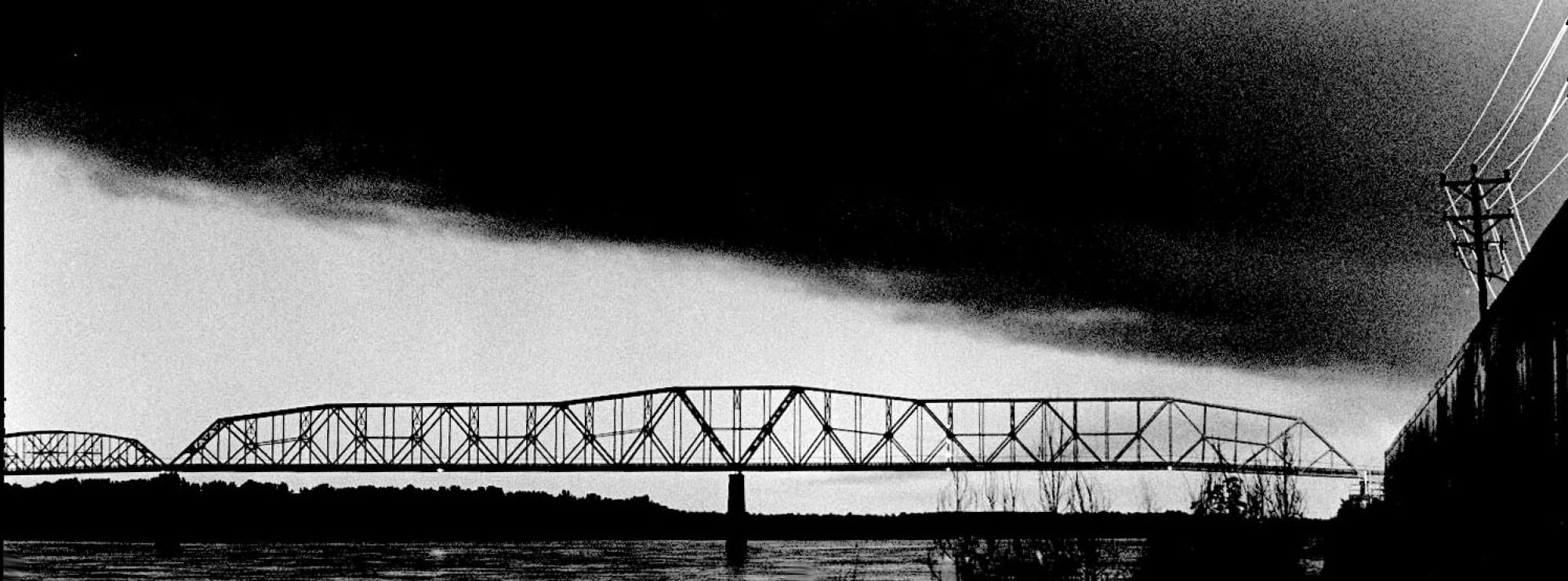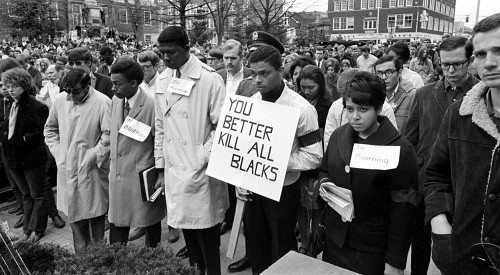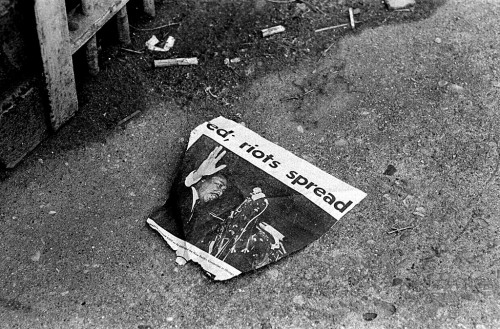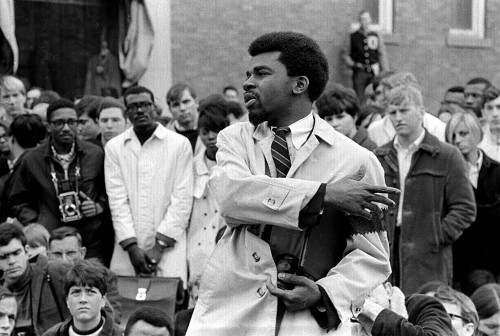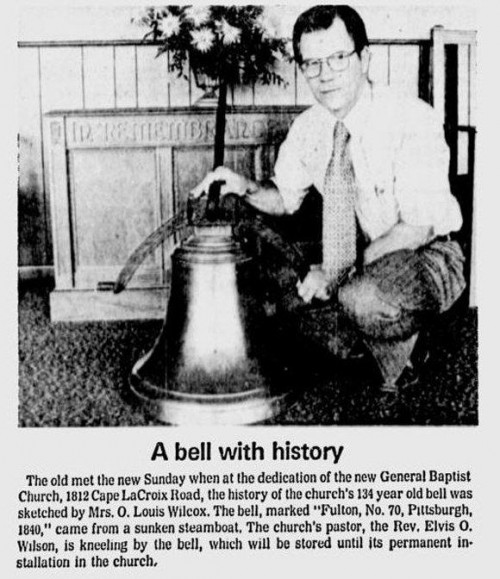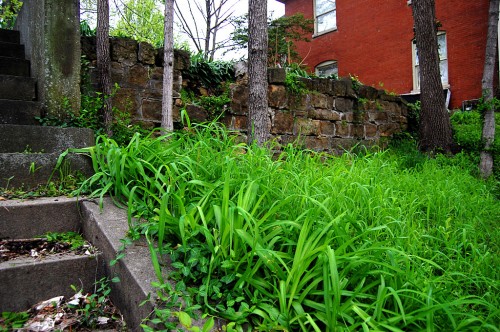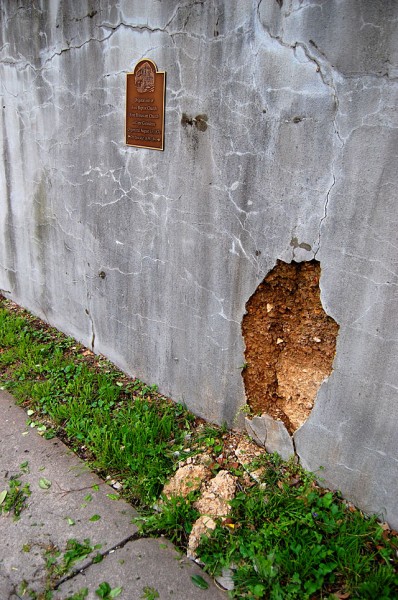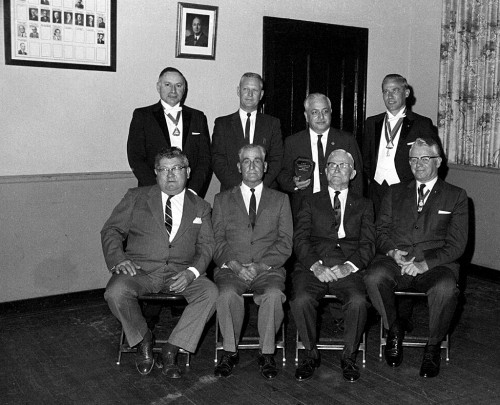 This photo of men was taken in the Knights of Columbus Hall on April 2, 1967, if the note on the negative sleeve is to be believed. I searched for it in The Missourian, but didn’t see it. Either it didn’t run or I shot it as a freelance job.
This photo of men was taken in the Knights of Columbus Hall on April 2, 1967, if the note on the negative sleeve is to be believed. I searched for it in The Missourian, but didn’t see it. Either it didn’t run or I shot it as a freelance job.
Some of the men look familiar, but the only one I can identify for sure is the man in the back row, on the left. That’s Ray Seyer, Wife Lila’s uncle. You’ll be hearing more about him soon. Lila went back to Cape for his 90th birthday party Saturday.
These are men who wear serious, built-to-last wingtip shoes. I wonder if they were made in the Cape Shoe Factory? Click on any photo to make it larger.
The KC Hall
 The Knights of Columbus Hall that overlooks the Mississippi River is one of those buildings that I would recognize at a glance, but haven’t had many occasions to visit. My most vivid memory is abandoning my date – probably Lila – in my car in the parking lot one night while I dashed off to shoot a fire in a neighboring building.
The Knights of Columbus Hall that overlooks the Mississippi River is one of those buildings that I would recognize at a glance, but haven’t had many occasions to visit. My most vivid memory is abandoning my date – probably Lila – in my car in the parking lot one night while I dashed off to shoot a fire in a neighboring building.
Casino vs. Bingo?
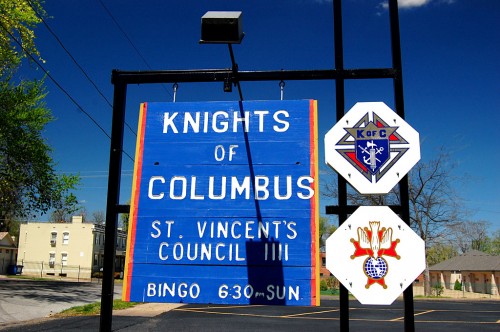 Will the Bingo players keep coming or will the Casino dry up that income for local charities and groups?
Will the Bingo players keep coming or will the Casino dry up that income for local charities and groups?
A family photo
 The last time I was inside the KC Hall was after Lila’s mother’s funeral. The family gathered there to reminisce and to snack on food friends had brought. Inevitably, cameras came out and the picture-taking started. This sequence shows Son Adam with his Uncle John Perry. The family resemblance is plain.
The last time I was inside the KC Hall was after Lila’s mother’s funeral. The family gathered there to reminisce and to snack on food friends had brought. Inevitably, cameras came out and the picture-taking started. This sequence shows Son Adam with his Uncle John Perry. The family resemblance is plain.
